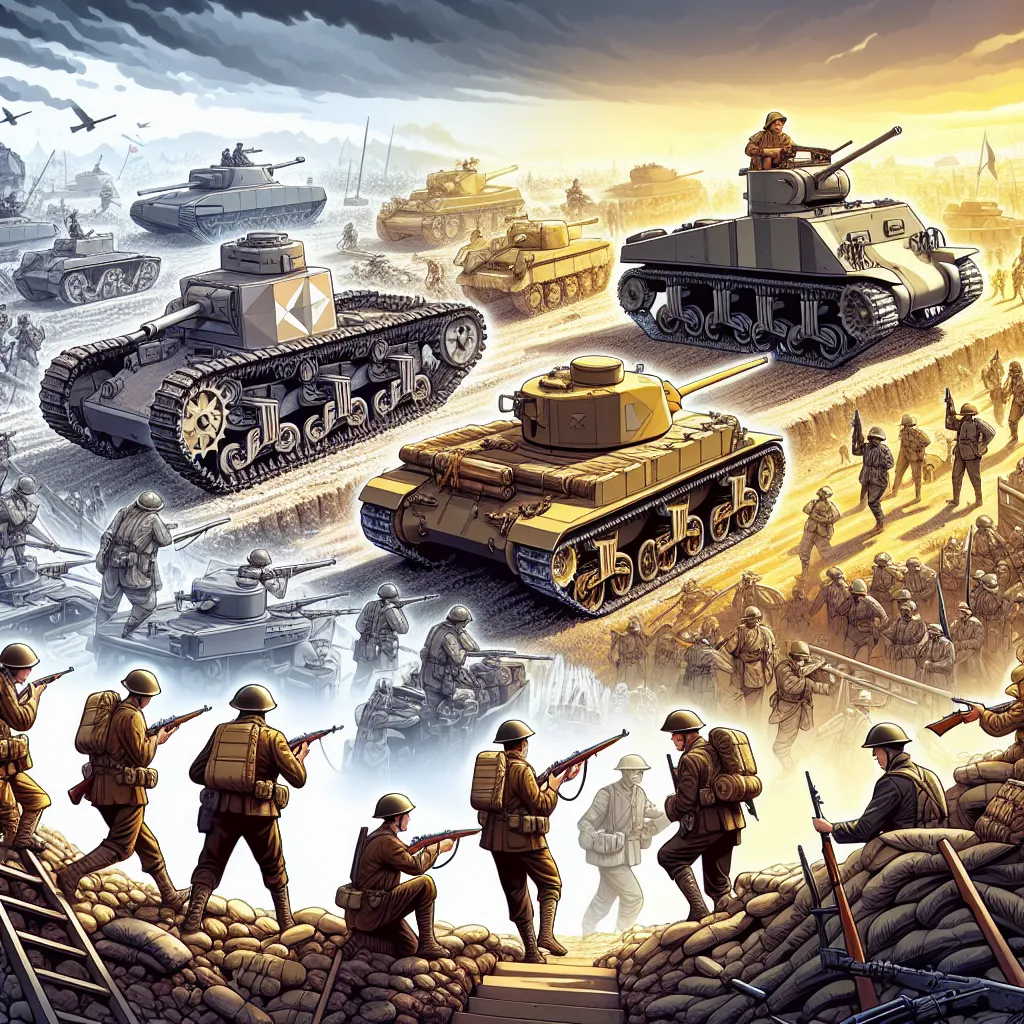Necessity is indeed the mother of invention. During World War I, the Western Front was mired in a brutal deadlock, where progress was measured in mere meters rather than kilometers. However, on August 8, 1918, at the Battle of Amiens, the game changed dramatically. In just one day, the Allied forces pushed 13 kilometers into German-held territory. The magic ingredient? Over 550 tanks roared to life on the battlefield, redefining modern warfare.
Back in 1915-1916, the British conceived the tank specifically to tackle the challenges of trench warfare. The rhomboid-shaped Mark I tank, weighing in at 28 tons, was designed to cross trenches without getting stuck. It first saw action on the Somme on September 15, 1916. Unfortunately, it was riddled with issues: a weak 78-kilowatt engine, mechanical failures, and crewmembers unaccustomed to operating these mechanical beasts. They were slower than foot soldiers and communication inside was nearly impossible, often leading to tanks straying off as toxic fumes filled the compartment. Yet, the relentless push to make improvements paid off.
By 1918, the tank had evolved into an indispensable tool in warfare. The Mark IV boasted a more powerful 150-kilowatt engine, reduced weight at 25 tons, and a speed boost to 6.5 kilometers per hour. These continuous refinements solidified the tank’s place in combat strategy.
Despite its rough start, the tank’s psychological and tactical impact was enormous. Imagine being a foot soldier with a rifle, suddenly confronted by a colossal, clanking landship. Fast forward two decades, and tanks hit their apex with World War II’s infamous Blitzkrieg. Led by the formidable Panzer tanks, the Germans demonstrated a fast and deadly method of combat, forcing the Allies to scramble for equivalent firepower.
By then, the British had lagged behind in tank design. They turned to the Americans, who delivered the M4 Sherman—a medium tank equipped with a 75-millimeter main gun, a full traverse turret, and the ability to keep up with the German Panzers. Quick on its heels, weighing nearly 30 tons, and topping speeds of 40 kilometers per hour, the Sherman was a true workhorse. It came packed with anti-infantry machine guns and a 50-caliber anti-aircraft gun, covering all bases.
The Sherman’s mass production was its strength, with nearly 5,000 units produced by giants like Ford and General Motors. This powerhouse saw action well beyond World War II, but as technology advanced, even the Sherman had to make way for something bigger and faster.
Enter the Cold War and the birth of the M1 Abrams, a tank that stands as a testament to cutting-edge military engineering. Despite its hefty weight of up to 70 tons, it’s surprisingly elusive on the battlefield. Its low profile and reduced thermal signature make it hard to detect and target. When hit, it offers unparalleled protection, utilizing state-of-the-art armor, including depleted uranium layers for extraordinary durability.
The M1 Abrams is renowned for its 120-millimeter smoothbore main gun, which can out-range any other current tank. Thanks to advanced targeting systems, it can accurately engage multiple targets while on the move. Its impressive speed, exceeding 70 kilometers per hour, is achieved through a unique gas turbine engine—a whisper-quiet powerhouse that has earned it the nickname “Whispering Death.”
From trench-busting Mark I to the state-of-the-art M1 Abrams, tanks have continually reshaped the battlefield, pushing the envelope of military innovation and strategy.






